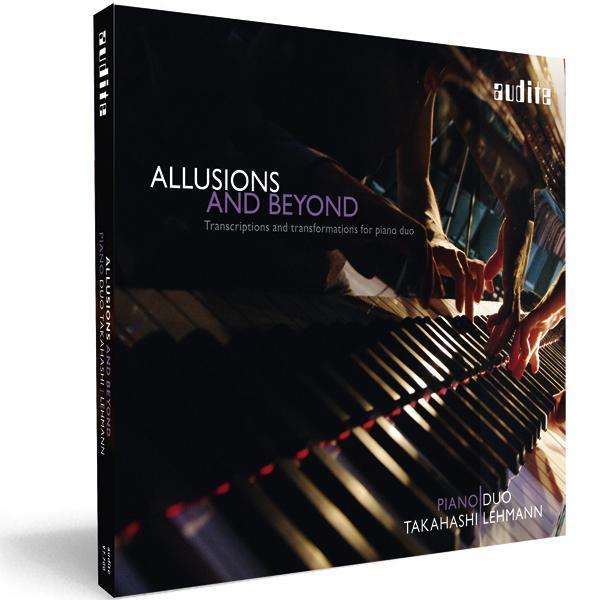Sep 23, 2016 | Agnes Böckenhoff Release Video: Allusions and beyond / PianoDuo Takahashi|Lehmann
Musical Transformations for Piano Duo
The latest release of the PianoDuo Takahashi|Lehmann - their third recording for audite - presents transcriptions of pre-existing works as well as new compositions permeated by musical quotations and allusions to the works of other composers. Drawing on musical history, existing works are approached in diverse ways, from using almost original material through to dissolving of the classical understanding of time and tradition.
György Kurtág's arrangements of Bach's chorale preludes and Max Reger's transcription of the Fifth Brandenburg Concerto transfer a piece from one medium (orchestra or organ) to another (piano duo) without changing the original composition; Kurtág chose sacred works, Reger a secular concerto. Kurtág's translations for two pianists were the result of a contemplative immersion in Bach's pieces; Reger managed to retain the concerto character whilst creating a transparent opus for two players at one piano.
Brahms' Haydn Variations and Bernd Alois Zimmermann's Monologues also exist in alternative versions for orchestra, written by the composers themselves. In Zimmermann's case, the two versions differ to such a degree that the second one for two pianos, recorded here, should be considered a new composition - a new, second reflection on the idea of the work and the musical material. Bernd Alois Zimmermann integrated numerous quotations, thus displaying the process of transformation of historic music in his Monologues, as well as showing the tension between sacred and secular music. For Zimmermann, "music about music" does not just mean tracing the long arc of time stretching from Bach's era to our present day, but also separates the traditional understanding of time and epochs out of its linearity.
The PianoDuo Takahashi|Lehmann once again illuminate the multi-faceted cosmos of piano music for four hands at one or two pianos. With their familiar insightful and virtuoso piano technique, the two players manage to combine scholarly programming with passionate expressiveness. Their music-making, both sophisticated and touching, makes even seemingly abstract works accessible to their audience.
